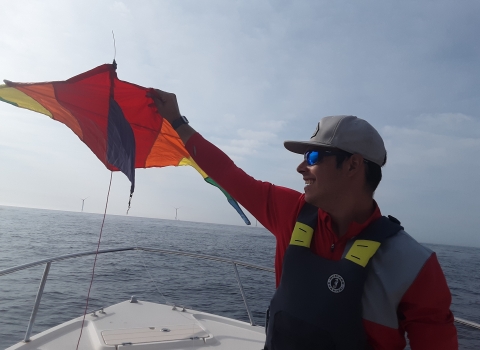Q: What is the purpose of this amendment?
A: This amendment meets a procedural requirement and does not affect the current ESA status of the Key deer. The draft amendment to the Key deer recovery plan adds delisting criteria for the Key deer that were not included when the recovery plan was developed in 1999. The original plan only included downlisting criteria.
Q: What is the proposed criteria for delisting the Key deer?
A: The proposed delisting criteria within the draft amendment to the Key deer recovery plan are as follows:
Subpopulations on Big Pine, No Name, Sugarloaf, and Cudjoe Keys exhibit a stable or increasing population trend, evidenced by natural recruitment and a stable age distribution (Factors A and E).
Subpopulations are connected to facilitate dispersal; provide adequate access to freshwater resources, fawning areas, and food sources; and ensure genetic diversity (Factor A and E).
Sufficient Key deer habitat is properly managed (e.g., prescribed fire, mechanical treatment, etc.) and connected such that the Key deer remains viable for the foreseeable future (Factor A).
When, in addition to the above criteria, it can be demonstrated that habitat loss associated with sea level rise is diminished such that enough suitable habitat remains in the foreseeable future (i.e., as far into the future as we can reasonably predict) for Key deer to remain viable (Factor E).
Any additional threats (e.g., disease, deer vehicle collisions) are minimized/managed throughout the range such that the Key deer remains viable for the foreseeable future (Factors A-E).
Q: What are the factors for listing a species?
(A) The present or threatened destruction, modification, or curtailment of habitat or range.
(B) Overutilization for commercial, recreational, scientific, or educational purposes.
(C) Disease or predation.
(D) The inadequacy of existing regulatory mechanisms.
(E) Other natural or manmade factors affecting continued existence.
Q: Is the U.S. Fish and Wildlife Service downlisting or delisting the Key Deer?
A: No. If the Service decides to change the status of a species, the action must first be proposed in the Federal Register to seek public comment and peer review, followed by a final decision announced in the Federal Register.
Q: What is the purpose of a recovery plan?
A: Recovery plans are non-regulatory documents that provide guidance on how best to help recover species.
Q: Can the public comment on this action?
A: Yes, the public has until August 11, 2022 to review and comment on an amended recovery plan for the Key deer. The U.S. Fish and Wildlife Service seeks input from local, State, and Federal agencies, Tribes, non-governmental organizations, and the public to help understand the threats, recovery needs and implementation concerns for the endangered Key deer, Odocoileus virginianus clavium.
Q: How can the public comment?
A: The public can review the draft amendment to the recovery plan at the Service’s Florida Field Office website at https://www.fws.gov/node/266264. Submit comments by email to: keydeer_draft_recoveryplan@fws.gov. Please include “Draft Recovery Plan Revisions Comments for Key Deer” in the subject line. We must receive comments on the draft recovery plan revisions on or before August 11, 2022.
Q: When was the Key deer listed under the ESA?
A: The Key deer was listed as endangered under the ESA in 1967. At that time there were only a few dozen Key deer remaining.
Q: Which Florida Keys are the deer found on?
A: Key deer currently live on 26 islands extending from Big Pine Key to Lower Sugarloaf Key in the Florida Keys.
Q: How many Key deer are there now?
A: The Key deer population rose to around 1,000 in 2016. That estimate dipped due to the screwworm outbreak in 2016-2017 and Hurricane Irma in 2017. Surveys conducted in 2020 show population numbers at approximately 750 individuals.
Q: How is Key deer conservation supported?
A: The 9,000-acre National Key Deer Refuge provides habitat on public lands for the Key deer. In addition, the Big Pine/No Name Key Habitat Conservation Plan ensures development impacts are minimized throughout the entire area of Big Pine and No Name keys. Furthermore, the Florida Department of Transportation has installed about three miles of fencing along US 1 on Big Pine Key, as well as two underpasses, four deer guards, and signage to reduce deaths from automobiles.
FOR FURTHER INFORMATION CONTACT: Lourdes Mena at 904-731-3134. Individuals who are hearing impaired may call the Federal Relay Service at 800–877–8339 for TTY assistance.


